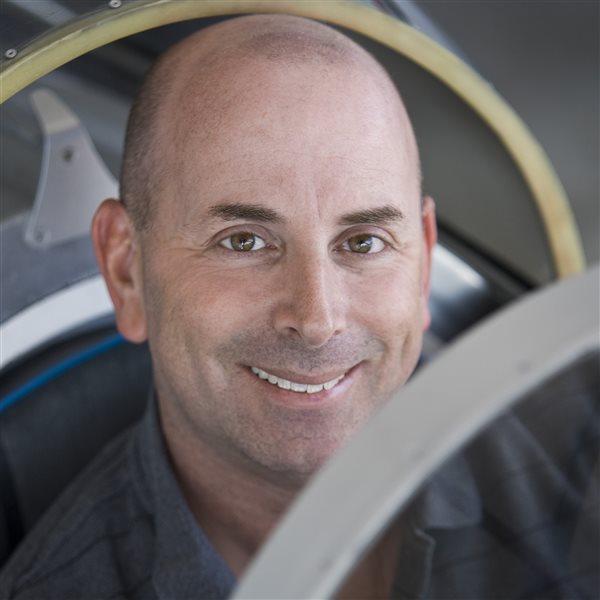Fly like an autopilot
Helpful hints from automation
In trying to figure out how to land this new-to-me aircraft, I turned to a knowledgeable but untalkative source: a flight simulator.

Inside the realistic sim at FlightSafety International in Tampa, Florida, I loaded and activated a precision approach, then sat back and watched the automation do its magic. With the airplane’s landing gear and flaps down and the pre-landing checklist complete, the autopilot tracked the localizer and glideslope with uncanny precision.
A close look at the robotically stable approach showed the airplane in a level pitch attitude, on its approach speed, at 64 percent power, a descent rate of 700 feet per minute, and the flightpath marker (the green dot on the Garmin G3000 primary flight display) bisecting the synthetic-vision-derived runway threshold.
The only things left for the pilot to do before landing were to click the autopilot off, bring the power levers to idle, and flare—acts that are second nature to pilots.
Now, when I hand-fly the actual airplane, I shamelessly copy what I saw in the sim—and it usually gets me close to preset aircraft performance targets. In the bad old days, aeronautical engineers tried—and usually failed—to make autopilots fly like skilled pilots. On autopilot, headings wandered, turns came too early or too late, and pitch was a sine wave. If autopilots were judged by the same standards as pilots, they would have failed their checkrides.
Autopilots never get tired, cranky, or impatient.Now, however, the worm has turned. Autopilots have had their John Henry moment where technology surpasses human capacity. Modern, digital autopilots are so good that the best a hand-flying human can do is try to mimic them.
It’s impossible to outdo them, of course, since modern digital autopilots update five times a second or more—way quicker than any pilot can recognize and adjust to new information. But we humans can learn from the automation, and it doesn’t require a fancy simulator, or even a simulator at all.
Take slow flight, for example. That’s an exercise every student pilot learns by rote early in training (see “Slow Going”). Yet an autopilot can show us how to cut to the chase.
In a Cessna 172 Skyhawk at a safe altitude with the autopilot engaged in altitude hold, reduce the throttle to idle and wait for the airplane to decelerate to your target speed, say 65 knots. Then add enough engine power to keep it there. Stabilize for a minute or two and note the results. It’ll probably be something like a 3-degree nose-up attitude and 2,100 rpm.
Whenever you’re in a Skyhawk and want to fly slow, you’ll know the shortcut. The approximate pitch and power required are known values, so you can go right to them. Getting it just right requires fine tuning based on aircraft weight, density altitude, and other factors, but these autopilot-aided numbers provide a baseline.
Modern autopilots provide even more information to instrument pilots.
Bruce Williams, an aviation writer and flight instructor living in Seattle, Washington, suggests using the cameras in our smartphones to create “panel selfies” to set metrics.
“We’ve all snapped photos of the scenery and our happy faces as we fly,” Williams said. “Why not a panel selfie? It’s quicker than scribbling figures in flight and far easier to read the next day.”
Williams suggests pilots record panel/engine monitor photos when:
- Flying straight and level in high-speed and economy cruise.
- In cruise climb.
- In cruise descent.
- Being vectored for an approach.
- On final while the autopilot tracks lateral and vertical guidance.
In the 1989 Beechcraft Bonanza A36 Williams flies, he typically tracks the ILS glideslope at about 110 knots at a power setting of 17 to 18 inches of manifold pressure, approach flaps, and landing gear down. If he’s on autopilot and controllers ask him to speed up, he simply adds power, and his airplane accelerates while still following the glideslope.
Similarly, internal logic built into the autopilot shows the optimum intercept angles, and how to make heading corrections.
If the localizer is offset to the right, for example, the autopilot momentarily banks right, levels the wings, and collects the localizer needle. Then a modest heading change to the left holds the corrected heading.
“I teach my instrument students to try to do what the autopilot does so well,” he said. “Make a slight turn, level the wings, then correct again before the localizer needle is completely centered—and stay coordinated throughout the process.”
Sophisticated autopilots can automatically perform feats that no sane pilot would even attempt. How about a 90-degree intercept of an ILS at 220 knots just outside the final approach fix? No human pilot can reliably pull off that trick, yet autopilots do it reliably—and they roll out of the turn exactly on course no matter the wind.
Autopilots never get tired, or cranky, or impatient. They break from time to time, so they must be closely monitored (and correctly programmed).
Modern versions are designed by some of the brightest engineers in the aerospace industry, and those people have made a science out of replicating the best practices of human pilots over time.
It’s long been a stinging insult to say that a pilot flies “mechanically.” But today, there’s certainly no shame in flying like any other modern, digital autopilot. In fact, it would mean we fly smoothly, predictably, and decisively, and that we seldom make mistakes and absolutely never fuss or complain.
Now that’s something to aspire to.



